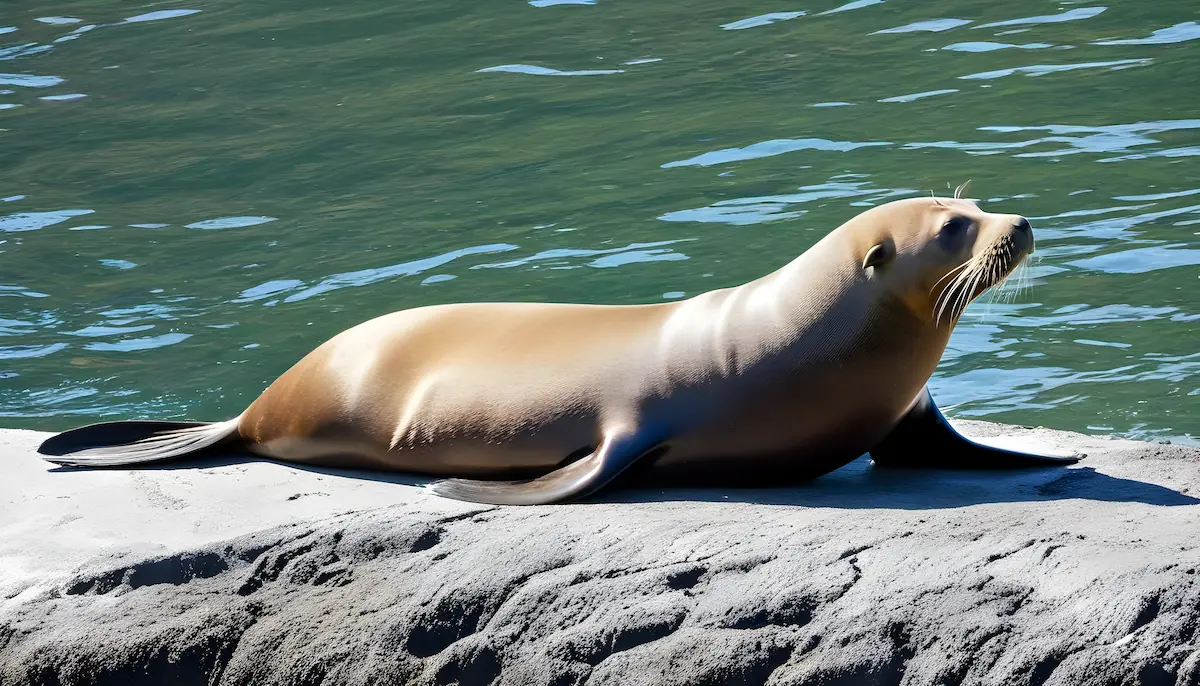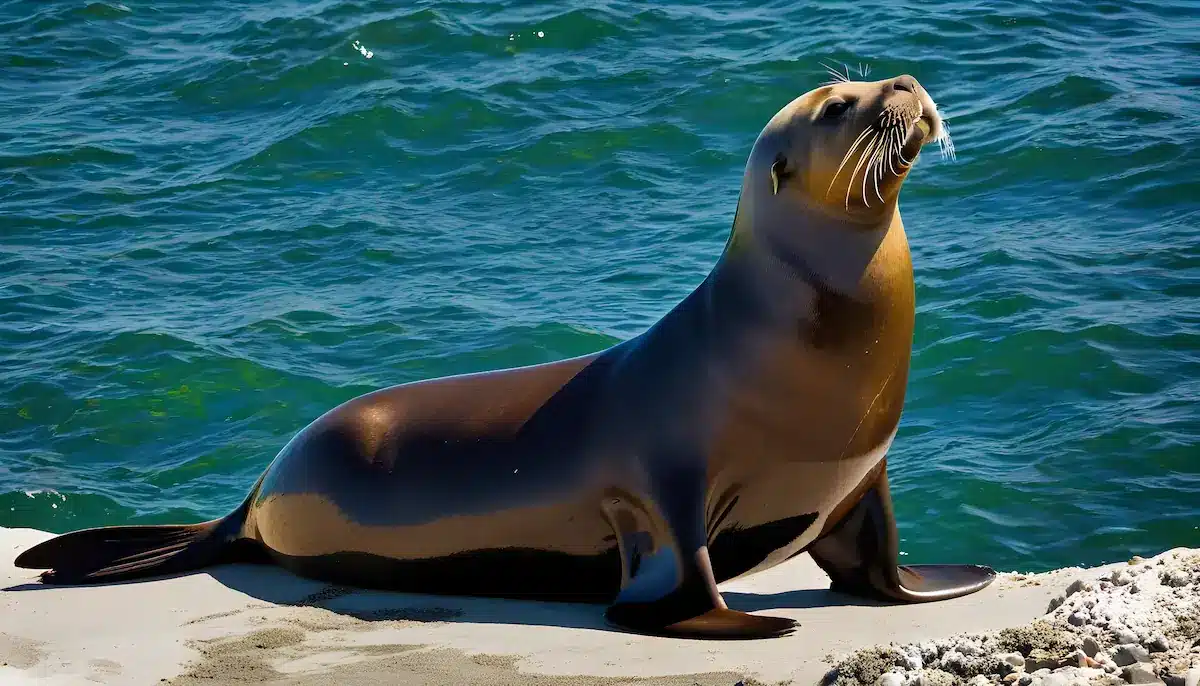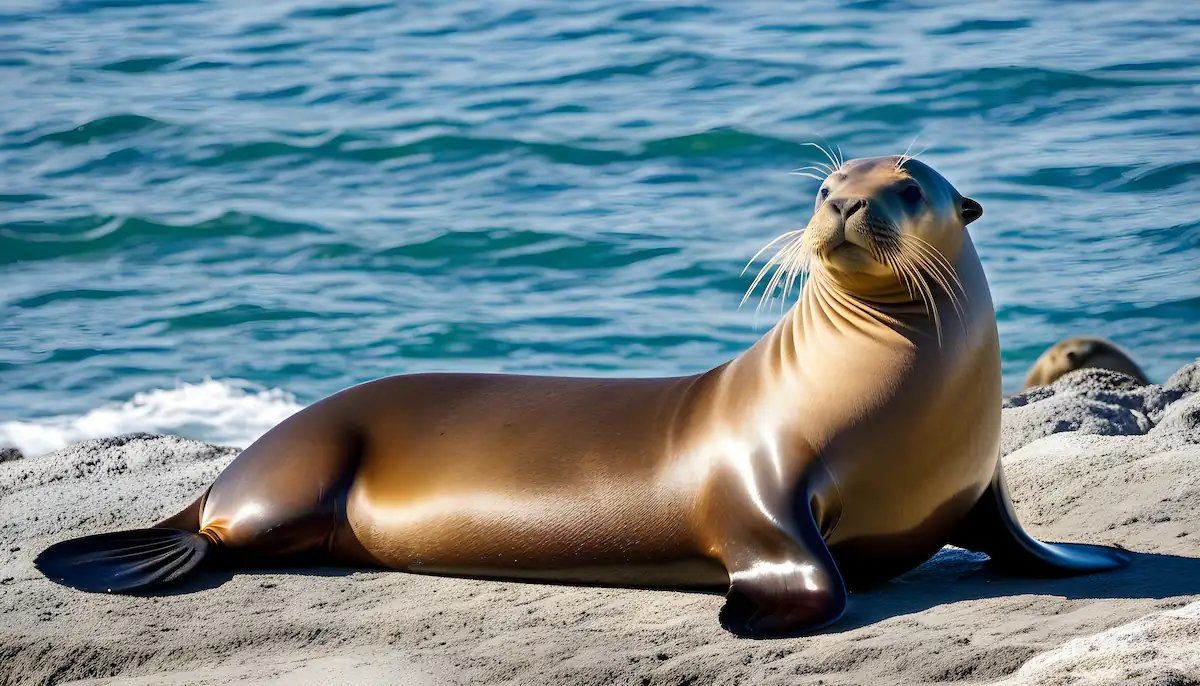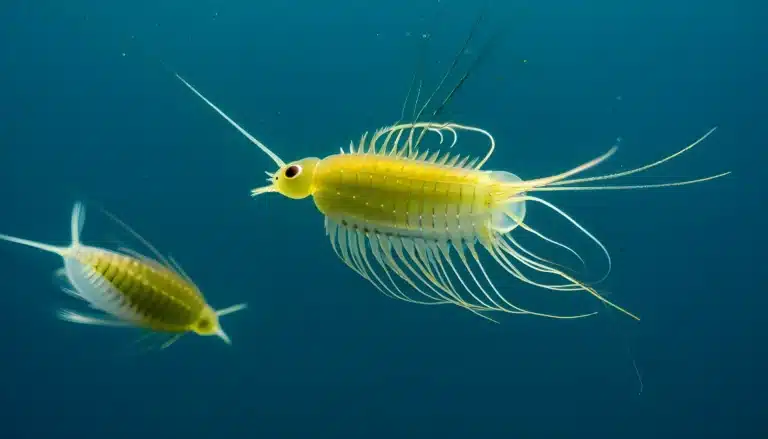California Sea Lion (Zalophus californianus)
The California sea lion, a marine mammal belonging to the eared seal family (Otariidae), is characterized by its adept leaping abilities, often found resting on rocks, floating docks, beams under fishing piers, and balancing on floating buoys along the rocky shores of the North Pacific, ranging from British Columbia to Baja California in Mexico, with males reaching lengths of up to 8 feet (2.4 m) and 800 pounds (363 kg) and females up to 6 feet (1.8 m) and 240 pounds (109 kg), sustaining itself on a diet consisting of squid, fishes, and octopuses.
Natural history
- 🌊 Social Behavior: Sea lions are highly social and form groups ranging from several hundred to several thousand animals in colonies both onshore and in the water.
- 🤝 Group Dynamics: They stick together in water, and it’s common to observe groups rafted up on the surface in a behavior known as “jugging,” where their flippers are raised in a jug handle shape.
- 🌡️ Temperature Regulation Hypothesis: Scientists suspect that jugging behavior may be a mechanism to help sea lions maintain a warm internal body temperature.
1-liner Summary: Highly social sea lions exhibit group behaviors both onshore and in the water, with the unique “jugging” phenomenon potentially serving as a means to regulate internal body temperature.

In Monterey Bay
The California sea lion population in the specified area experiences seasonal fluctuations, with mature animals migrating to southern California breeding grounds in late spring and returning to Monterey Bay in the summer, often accompanied by young animals from southern California.
Historically, juvenile and male sea lions frequented Monterey Bay, while mature females stayed closer to breeding colonies in southern California. As the California sea lion population grows, more adult females and juveniles are now observed in Monterey Bay, indicating a shift in migration patterns.
Sea lions are easily recognizable neighbors due to their loud barking and playful acrobatics. Their opportunistic nature is evident as they actively seek easy meals. These marine mammals often trail fishing boats, anticipating the chance to feast on fish that spill from the nets. Additionally, sea lions follow humpback whales and dolphins, taking advantage of the fishes gathered together by these larger animals as a convenient food source.
Historically, Steller sea lions were more common than California sea lions north of Monterey Bay, but in recent decades, the Steller sea lion population has dramatically declined. Today, California sea lions are more prevalent and have expanded their range to include many parts of Oregon and Washington. The decline of Steller sea lions is attributed to factors like changes in food availability, competition with fisheries, and environmental changes. Conservation efforts and ongoing research are essential for the well-being of both species along the Pacific coast.

Conservation
- 🌊 Population Depletion and Rebound: California sea lion populations were once depleted but have rebounded, credited to the protections provided by the Marine Mammal Protection Act.
- 📜 Global Sea Lion Species Status: Of the six remaining sea lion species worldwide (excluding the extinct Japanese sea lion), the California sea lion is the only one experiencing a population expansion.
- 📉 Other Species Status: Other sea lion species globally are either in decline or limited to small populations.
- 🎣 Fishing Gear Entanglement: Sea lions may get entangled in fishing gear if they approach fishing boats, necessitating annual captures to remove lures, nets, or fishing lines causing injuries.
- 🚫 Human-Induced Injuries: Sea lions are sometimes treated for gunshot wounds, indicating potential human-induced harm to these animals.
Once depleted, California sea lion populations have rebounded under the protection of the Marine Mammal Protection Act, making it the sole expanding species among the remaining six global sea lion species. Sea lions face threats from fishing gear entanglement, requiring annual captures for gear removal, and sadly, they are occasionally treated for gunshot wounds, indicating human-induced injuries.
Cool Facts
- 🏊 Swimming Abilities: Sea lions are fast and agile swimmers, capable of spending several days at sea, engaging in almost continuous diving.
- 🎶 Noisy Group Behavior: Groups of sea lions are known for their noisy and constant barking, audible from a considerable distance.
- 🌊 Recreational Behavior: Sea lions often engage in body surfing as a recreational activity.
- 🦈 Predator Vulnerability: Orcas and white sharks consider sea lions as prey, and occasional observations show lucky sea lions with bite marks, suggesting successful escapes from these top predators.
- 🤔 Distinguishing Features: Sea lions, sometimes confused with seals, have external ear flaps and can rotate their back flippers underneath their bodies to walk or run on land.
- 🚶♂️ On-Land Behavior: Sea lions are frequently seen swimming near the Aquarium, either heading out to hunt for squid in the afternoons or returning to haul out and rest along shores in the morning hours.
Fast and agile sea lions showcase remarkable swimming abilities, group noisiness, recreational body surfing, and face predation risks from orcas and white sharks, with distinctive features enabling both aquatic and on-land behavior.







